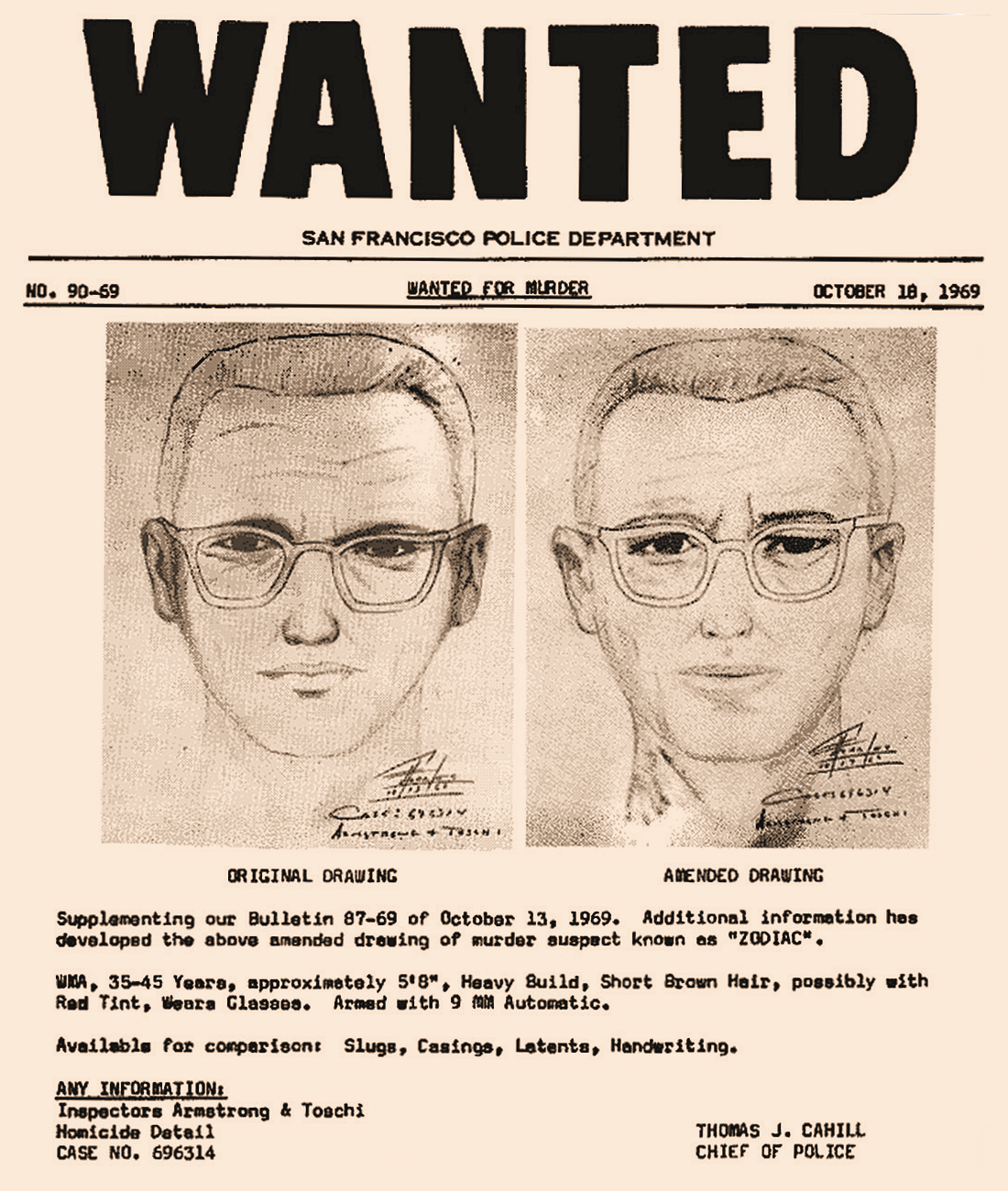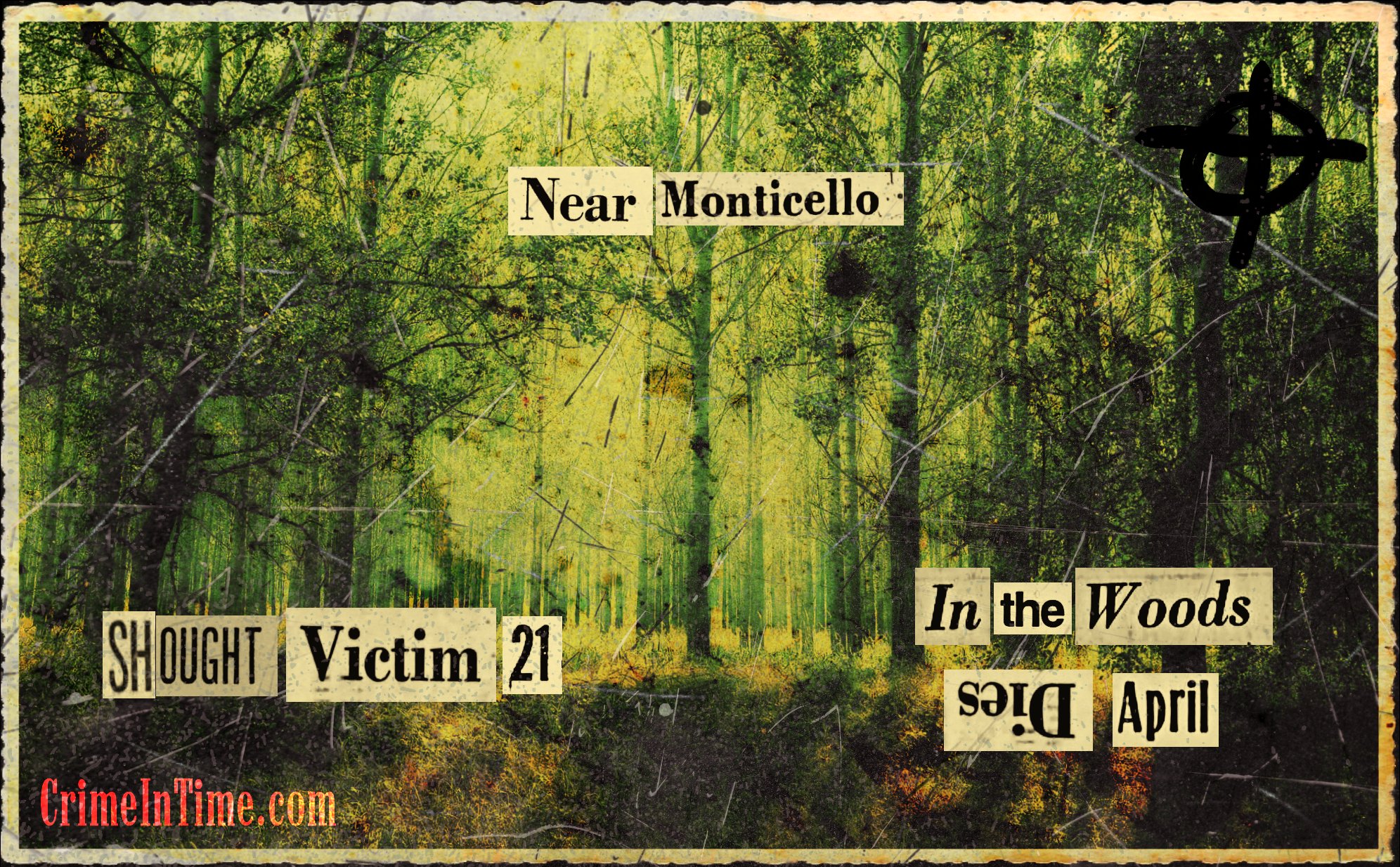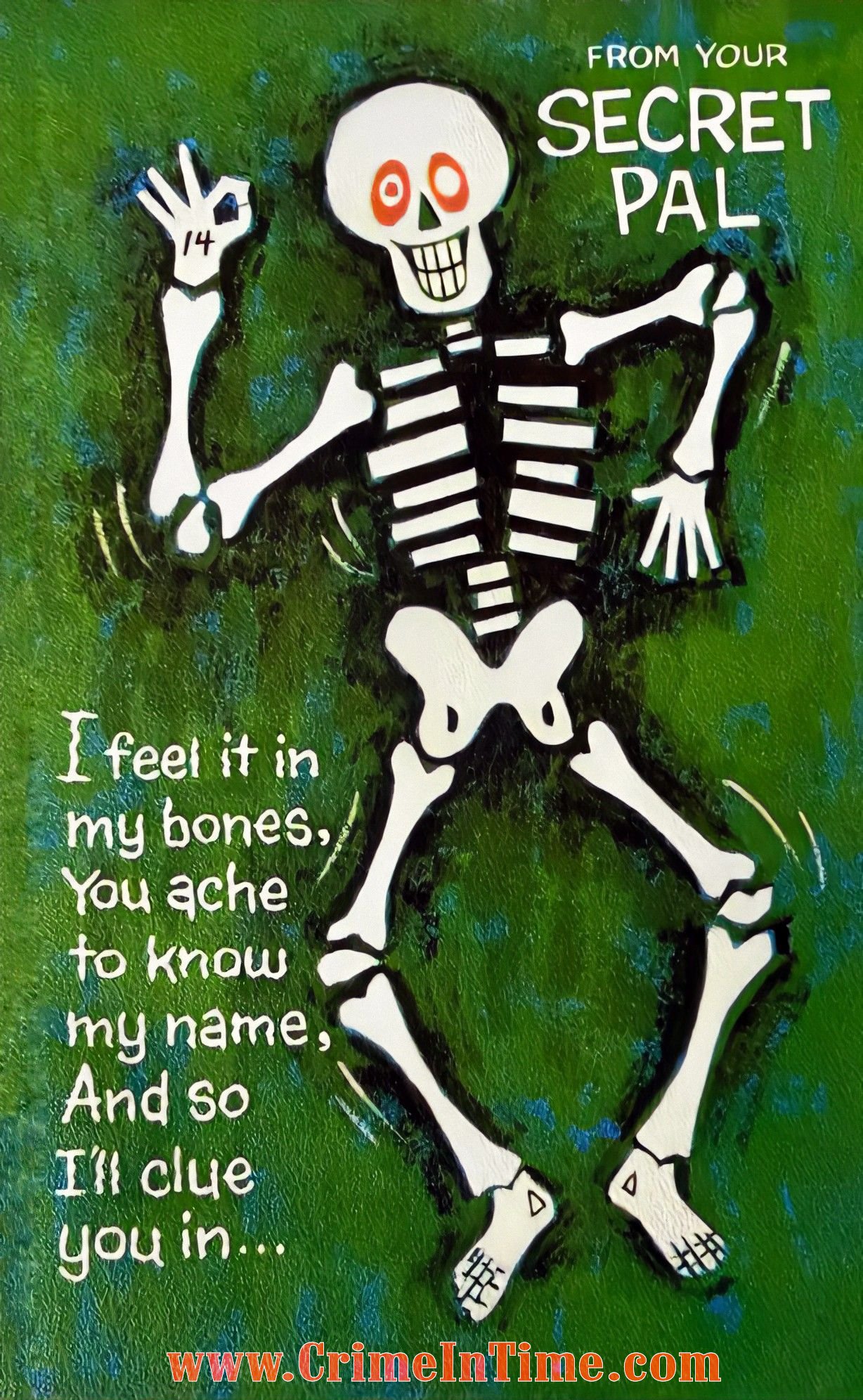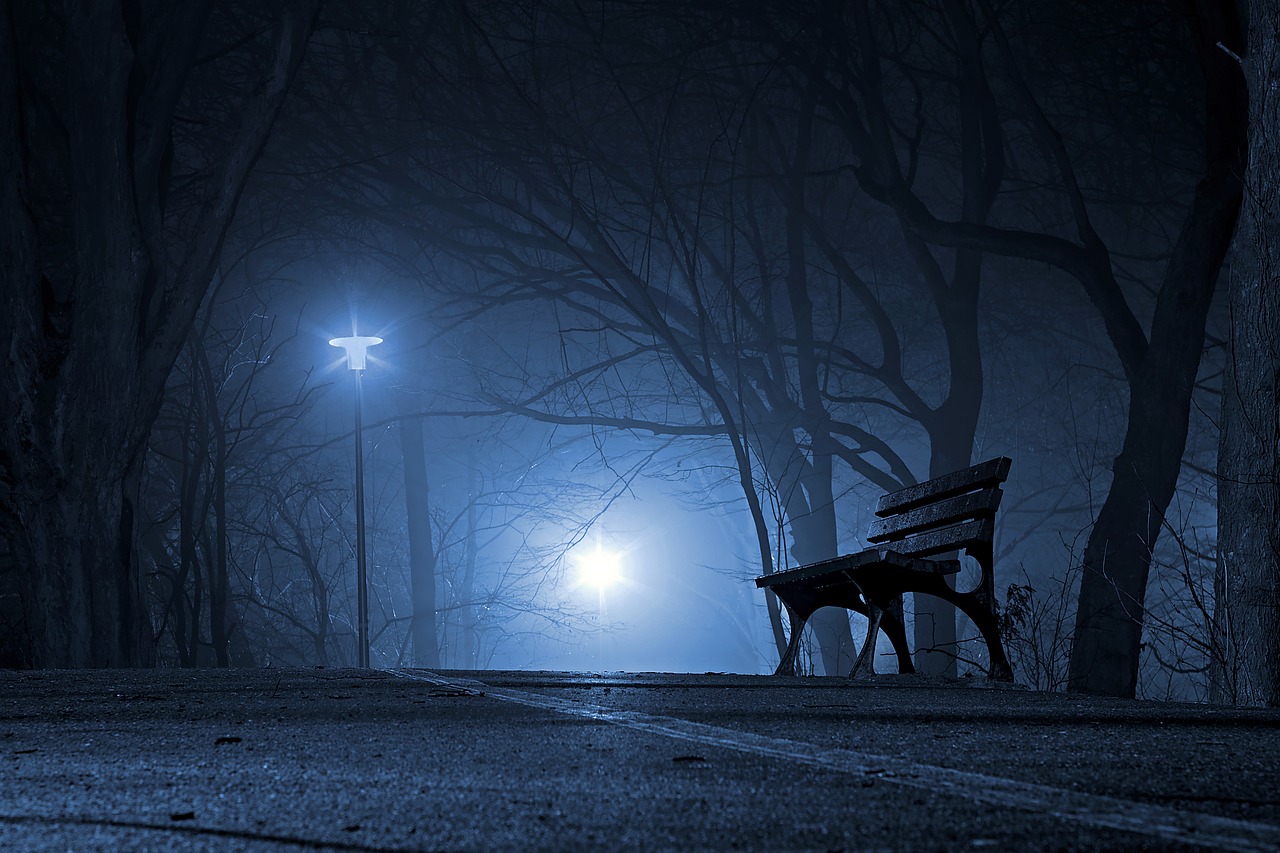An Experiment with the Zodiac Killer (Updated)
On October 11, 1969, at 9:55 PM, a
yellow taxi driven by 29-year old part-time journalist, part-time cabbie Paul
Stine stopped near the corner of San Francisco’s Washington and Cherry Street.
The passenger, the man who had
named himself the Zodiac, shot Stine in the head, killing him instantly. Minutes later and a few hundred yards away, an 8-year old witness saw the man and recognized
his face – or so he thought.
The young witness identified the man as X., a 38-year
old local who often went by a shortened version of his full first name. He
shared it with a famed Greek playwright, philosopher and militarist, whose best-known
work - the story of Greek soldiers caught behind enemy lines in ancient Persia - had just inspired a novel about troubled youth in New York's underworld of street gangs, and, in a decade, would serve as the basis for its legendary film adaptation, made by director Walter Hill.
The information about X., who had
been checked and investigated by law enforcement back in the day, resurfaced on
the Internet decades later. The document that contained his full name was
published online by Zodiac researcher Alex Lewis, and the revelation caused many
to chase X. and check his background and whereabouts. This was futile: X., who
died in 2016 at age 85, was not the Zodiac, as the detectives had established
long before. Yet the information was far from worthless: in
fact, it was potentially a useful clue. It would just have to be taken figuratively
rather than literally.
The young witness was a child describing
an unknown. Had he seen an animal he had never encountered, one whose name he
did not know, he would have used a creature he did know as a reference. For instance, if he saw a European bison or a drawing of the extinct aurochs, he
would probably identify it as the American bison – an animal he would be
much more likely to have encountered in the past, the closest known point of reference
he could name.
For the killer’s visage, his point
of reference would be the face of someone with the closest appearance – and, as
it happened, it was a man whom the young witness knew. Therefore, the killer
and the man likely did look similar, especially from distance.
In fact, when one views X’s photograph,
there are similarities in his facial shape and the famous sketch of the Zodiac.
There are differences, too, which led me to this little experiment: I took X’s
photograph, aged it to fit his possible appearance in 1969, and then proceeded
to combine it with the sketch.
A Wider Face
The original 1969 sketch has been occasionally criticized by some for making the Zodiac appear rather like a man of average weight, whereas every description of the killer has emphasized his considerable bulk. His visage has been described as wide, even plump, matching his portliness.
The sketch, admittedly, does little to reflect the bulkiness that the witnesses had brought up. Was it the question of the lighting in the street, a play of night shadows that caused something of a slimming effect? Was the Zodiac's face slimmer than his silhouette? Or, as fanciful as it may sound, perhaps the killer had started a diet?
Speculation aside, I took the graphic that was the result of combining X.'s aged photograph and the sketch, and attempted to make the face a little thicker, a little wider - a little fleshier.
Here, then, is how a heavier Zodiac may have looked. It is another, additional experiment, which I thought worth a try.
 | |
|
The Sketch
The amended 1969 sketch of the
Zodiac (before the amendment, the first variant of the drawing showed a visibly
younger man) is probably the closest known depiction of the murderer in
existence. It was created after the 1969 shooting of Paul Stine in San Francisco – the last canonically recognized Zodiac murder – and it had been based
on witness descriptions of the killer.
The drawing is sometimes flippantly dismissed, often accompanied by the nonsensical claim that “everyone in the
60s looked like that, if they just had glasses on” (the category of “everyone” presumably including such individuals as the obese, bald, hapless onetime suspect Arthur
Allen, or perhaps the wiry, curly-haired San Francisco Police Department detective David Toschi).
In fact, there are several
reasons why it is likely a highly accurate rendition of the killer.
- The initial version of the sketch was based on descriptions provided by teenage witnesses, the R. siblings, who saw the killer from their parents' apartment, where they were having a party with friends. The apartment was located about 50 feet away from Paul Stine's parked taxi, across the street. The teenagers watched the killer as he exited the cab, collected Stine's shirt, appeared to wipe his fingerprints within the cab, and walked away. (He may have left something inside the car as well, either deliberately or by mistake - a pair of gloves that did not belong to Paul Stine was found by the police, as was, reportedly, another item, whose nature was classified). They saw him in relatively good conditions (the lamps illuminated the street well, and the weather was good - there was no fog in the street), they were paying close attention to his appearance, and even though they were understandably concerned, they were not panicked, contrary to what some fictionalized accounts of the event would later state. In fact, one of the witnesses remembered actually walking out into the street, to take a closer look at the killer (teenage bravado certainly must have influenced that decision, but so did the witnesses' certainty that the man was only armed with a knife - they had not seen him handle a gun). By then, however, the Zodiac had already walked away from the taxi.
- Shortly after the murder of Paul Stine, the killer was passed in Jackson Street by a police patrol car, and observed by at least one of the policemen, Don Fouke. Fouke was driving the car to the west of Jackson Street, when he spotted a man walking on the northern side of the street. Unaware of the fact that he was looking at Stine's killer (the radio dispatch had mistakenly described the suspect as a black male), much less that the passerby was the notorious Zodiac (before the Zodiac admitted to the murder in his subsequent letter, the investigators were convinced that Stine's death was a botched robbery), Fouke nevertheless had a good look at the man. He has described the amended sketch as an accurate portrait of the passerby he saw that night.
- Eric Zelms, Don Fouke’s temporary partner during the patrol, was tragically murdered by an armed burglar only a few months after the encounter with the Zodiac. He left no known statement in which he would confirm if, like Fouke, he had cast his eyes on the Zodiac as well; neither had he ever made any official, publicized statement regarding the accuracy of the sketch. Years later, Don Fouke would recall meeting Zelms some time after the encounter with the killer (Zelms was not Fouke's regular partner, and the two had few interactions) and asking briefly about the Zodiac; according to Fouke, Zelms did not remember looking at the Zodiac during the ride down Jackson Street. However, according to long-standing rumors, Zelms did speak of the encounter to his family. If those rumors are to be believed, Eric Zelms had not only confirmed seeing the Zodiac, but he had also described the sketch as looking just like the man he had spotted the night of Paul Stine’s murder. Supposedly, he was determined to always be on the lookout for the man, hoping to run into him during one of his subsequent patrols. Of course, without confirmation, this remains just a rumor.
- Perhaps the most significant confirmation of the sketch’s accuracy came from… Zodiac himself. Specifically – from his panicked denial of its accuracy. In his letter sent in November 1969, the killer wrote: “I look like the description passed out only when I do my thing, the rest of the time I look entirle [sic] different”. This desperate and childish attempt at clumsy misdirection reeks of dread and alarm, and is as much as an open admission that Zodiac did find the drawing accurate.
- It is, of course, possible that Zodiac saw more of himself in the sketch than others would have: this was precisely the case with the notorious Zebra murders that shook San Francisco in 1973 and 1974. After a wave of brutal acts of murder that targeted seemingly random white denizens of the city, the police made a move which, already in the day, was deemed controversial. They did know that there were multiple killers, and that they were black, relatively young men. Therefore, they decided to create and publicize a sketch that was not based on any direct witness description – rather, it showed the face of a somewhat generic black man with short hair and a small mustache. The gamble proved spectacularly successful and cracked the case: Anthony Harris, one of the murderous “Death Angels” involved in the killings, saw the drawing and became convinced that he had been seen and identified. After sweating for a while, the increasingly desperate Harris decided to turn himself in, and exposed the twisted truth about the murderous cult, leading to multiple arrests (and lingering suspicions that the murders may have continued, committed in the environs of the city by other, unapprehended “Death Angels”). Perhaps, like Harris, Zodiac too saw himself mirrored in a sketch that others would not have necessarily associated with him. However, Fouke’s (and possibly Zelms’s) input suggests that Zodiac would not have been the only person to see the similarity between his visage and the drawing.
The Secret Letters
The aforementioned letter sent by Zodiac in November 1969 is the only known attempt at misdirection that the killer had made in reference to the sketch. However, when discussing any claims made by Zodiac in his known letters, it is important to put the emphasis on the word known.
For years, there have been persistent rumors of additional correspondence sent in by the killer and stored in the investigators' files, correspondence that has not been released and that is still kept confidential. The exact number of such supposed letters is not known, especially since they may have only been verified by comparison of handwriting - a method which is, to put it mildly, controversial. However, one repeated rumor has named a letter addressed to the director of the California Department of Motor Vehicles, sent either in the late 1960s or in the early 1970s. Intriguingly, the rumor has also alleged that this letter referenced a man once considered a person of interest in the Zodiac case (the man, W. G. - once revealed to the public in Robert Graysmith's book under the pseudonym "Andy Walker" - died in 2012, and was excluded as a suspect via DNA analysis).
Yet perhaps the most intriguing unreleased correspondence tied to Zodiac is the one known as the "In the woods dies April" or the "Monticello" postcard. Unlike the aforementioned supposed letter to the DMV, this piece of correspondence is actually known to be real. Its existence is confirmed in Zodiac's file kept by the San Francisco Police Department. The file describes it as a card which had been sent to the San Francisco Chronicle in July 1971, and which consisted of letters cut out of newspapers to form the sentences:
"NEAR MONTICELLO... SHOUGHT VICTIMS 21... IN THE WOODS DIES APRIL".
Only the card's author would know for certain whether the word "shought" was just a misspelling of "sought", or a mediocre attempt at making a deliberate pun on the word "shot". Interestingly, however, both would match Zodiac's writing style.
A similar technique was used to create the much-better known "Sierra Club" card, sent in March of the same year to San Francisco newspapers The Times, The Examiner, and the San Francisco Chronicle. In that card, cut-out letters had been glued over a photograph of a wooded area (the photograph itself had been cut out from a printed advertisement of a house settlement in Nevada), into the sentences:
"SIERRA CLUB... AROUND IN THE SNOW... SOUGHT VICTIM 12... PEEK THROUGH THE PINES... PASS LAKE TAHOE AREAS".
("Sought" was not misspelled in this card, although that may simply have been so because its author had managed to find a newspaper headline with the complete word, and thus did not have to spell it himself).
Both the "Sierra Club" card and the "In the woods dies April" one were thought to be potential hints as to the location of the bodies of Zodiac's unknown victims. Over the years, a number of disappearances and homicides have been proposed by researchers as possible matches, although none have been confirmed by the investigators.
It should certainly be pointed out that even though both the Sierra Club and the Monticello card still remain within the investigators' scope of interest, and both are listed as "Suspected Zodiac Correspondence" in Zodiac's file at the SFPD, neither has been officially confirmed to have actually come from the killer (or, for that matter, from the same author). Of course, if they did come from Zodiac, chances are high that they were just his fantasies or attempts to attach himself to crimes or disappearances with which he had nothing to do.
However, the similarities between the nature and content of the Sierra Club card and the Monticello card, along with the fact that both had been mailed within just a few months, certainly do increase the likelihood that they had been created by the same person. Views vary as to whether Zodiac was the author - nevertheless, there are parallels between that which the killer revealed of himself through his confirmed correspondence and that which the creator of the cards did. There were evident similarities in their spelling, their phraseology, and, above all, in their psyche. Furthermore, the creator of the Sierra Club card had not only marked it with two instances of the killer's self-chosen symbol of the crossed circle, but had also signed the address side with the name "Zodiac", spelled in handwriting similar to that of the killer. The address, like the card itself, was cut and pasted, using the newspapers' own logos, but beneath them, a handwritten line was added: "att. Paul Averly = Chronicle", matching Zodiac's writing and style, as well as his penchant to maliciously misspell the name of Paul Avery. The reporter's columns in the San Francisco Chronicle seemed to have annoyed Zodiac on more than one occasion, due, no doubt, to the numerous jabs and contemptuous remarks that Avery had taken at the killer. The culmination of Zodiac's annoyance with Avery was the infamous Halloween card sent to the reporter in 1970, with a cartoon skeleton and the words "Peek-a-boo... You are doomed!" spelling a not-too-subtle threat to the recipient, but the killer continued to poke at the reporter even afterwards, perhaps reminding him that his transgressions had not yet been forgiven.
 |
| The address side of the Sierra Club card shares even more similarities with the confirmed correspondence from Zodiac than the reverse. |
"If it quacks like a duck...", the old adage goes, advising to apply instinct and statistical probability when facing questions with uncertain answers. The combined impression stemming from the Sierra Club card is that it certainly does quack like Zodiac - and, in all likelihood, so does the Monticello card.
At any rate, until all such supposedly classified letters from the killer are made publicly available, remarks concerning his written claims should come with the caveat that they refer to the known correspondence.
The Encounter in Jackson Street
One the most controversial aspects
of the Zodiac case is the extent of Fouke’s and Zelms’s encounter with the Zodiac. For decades, Fouke has steadfastly described the confrontation as short and
silent – the patrol car simply passed the man in the street, Fouke took his
general appearance in, and only returned to it later, upon realizing that he had
spotted the Zodiac.
 |
The officers had no reason to
suspect the man they saw – the radio description of Stine’s shooter had
mistakenly described him as a black man – but they may have well stopped briefly
to ask him if he had seen anything suspicious. That was what Zodiac himself claimed:
according to his subsequent letter, he had spoken to the policemen, and had
even fooled them by stating that he had seen an armed man running down the
street. Yet Zodiac was a notorious, manipulative liar and fantasist, who took
great pleasure in humiliating the police and taunting them for their perceived
mistakes. There is nothing about his description of the encounter that can be
considered reliable. Furthermore, if the policemen had spoken to a passerby who claimed to have seen something as suspicious as a fleeing man with a gun, they would have inevitably asked him for contact details, to be interviewed later, as the basic protocol dictated. This would have been well-known to both officers - Eric Zelms may have still been a rookie officer at the time of the encounter, but contemporary accounts paint him as dedicated and professional; Don Fouke was a 1968 nominee for "Officer of the Year", experienced and held in high regard by his peers.
However, sources within the SFPD
also made claims that Fouke had spoken to the Zodiac. On the surface, this
sounds much more serious – yet these claims may well have been internal rumors,
prompted by Zodiac’s letter, and possibly by the usual squabbles and politics within the
department. Others had no doubts about Fouke's veracity. Captain Martin Lee, SFPD's Chief of Inspectors in 1969, scoffed at the Zodiac's claims (which also included the boast that rather than fleeing the scene of the crime, he stayed hidden in the bushes in nearby Presidio Park, supposedly watching as the police searched for him fruitlessly). "That is a lot of poppycock", Lee said. "His description of the search activities is false. He wasn't anywhere around there. And it is preposterous that he was stopped and questioned by the officers. That just didn't happen."
Admittedly, there is also the
matter of Fouke’s lengthy, highly detailed description of the Zodiac – a man
whom he would have seen for no more than 15 seconds, in passing, from distance,
and lit only by street lamps. Yet the most obvious explanation is also the
simplest one: Fouke, as an experienced policeman, had been trained in observing
and remembering details about people whom he would encounter, and he had considerable
practical experience in doing so. Nevertheless, the preciseness of the
description still leads some researchers to suspect that Zodiac did speak to
the policemen.
There is, however, very little to
explain why such a charade would have been created in the first place. Multiple
explanations have been proposed (these were often nonsensical conspiracies about
protecting a supposedly well-connected suspect). The most popular one has stated that the
SFPD brass were so embarrassed about the fallout from the revelation that its
men had actually talked to the notorious killer that, fearing criticism, they forbade
the patrolmen from revealing the truth. This is extremely unlikely, to say the
least – it would make little sense to withhold the information about a conversation, yet still admit to the fact that the officers were a few feet away from the
Zodiac. Multiple people would have to be involved in the pointless cover-up, someone would have spoken up
after decades, and if the truth had leaked back in the day, the fallout would have been
much greater.
Another proposed explanation
claims that Fouke was embarrassed by the encounter, and feared punishment: as the
experienced, older policeman, he knew that he would have lived through it, but
he was concerned about Zelms, a young rookie, being made a scapegoat. Therefore,
proponents of this idea say, Fouke convinced Zelms to stay numb about the
supposed conversation with the Zodiac, and decided to reveal only part of the
truth. This take comes across as almost as unlikely as the SFPD brass cover-up,
and even more foolish: both patrolmen would have had little to fear (they were
looking, as ordered, for a black suspect), but withholding such critical information
as conversing with the killer could have brought serious charges, in addition
to inevitable dismissals. In addition, proponents of this idea offer no convincing
explanation why Fouke would have kept to his description of the encounter for
decades, long after his retirement from the force.
All in all, the
simplest version of the events remains the most likely one: the policemen did
not engage Zodiac in conversation, they remembered him because they were used
to memorizing people’s appearances – and the man did indeed resemble the drawing.
Facing Fouke and Zelms – even in
passing – and seeing his face plastered all over California had unnerved the
murderer so much that he stopped his killing spree, and submerged himself fully
into fantasies and recollections instead. Whether he did so temporarily and
attempted later attacks (such as the kidnapping of Kathleen Johns in March 1970), or ceased
his lethal activities altogether, the sketch and the encounter did shake him up, and did so to a greater extent than he would be willing to admit.










Hey Jaromir, it's Alex. Just wanted to stop by and leave a comment to say thank you for your acknowledgement in the article. It took a good 2 years to get his name released. Third time lucky on the FOIA requests.
ReplyDeleteThere is a potential little interesting fact, albeit circumstantial, relating to Xen and a connection to Zodiac. You will remember that when Zodiac sent one of his greeting cards to the chronicle, he had written on the inside of the envelope: "Sorry, no Cipher. Sorry, No Cipher." He wrote this same phrase twice diagonally to form the letter X
When coupled with this being written not on the card, which he could have and usually would have, but it's written on the ENvelope as in XEN the X being "Sorry, No Cipher. Sorry, no Cipher" on the EN-velope to signify that what he is actually saying is sorry no Cipher, sorry no Cipher is the actual cipher itself because it's an X on the ENvelope to signify XEN. If you know anything about Zodiac itsbgis love of word play and ciphers and him saying sorry there isn't one (as if we wouldn't notice that and would needed to be informed of that) is actually the Cipher clue to his name itself I believe. "In this Cipher is my identity..." he once said. He never said which Cipher tough.
Hey Jaromir, it's Alex. Just wanted to stop by and leave a comment to say thank you for your acknowledgement in the article. It took a good 2 years to get his name released. Third time lucky on the FOIA requests.
ReplyDeleteThere is a potential little interesting fact, albeit circumstantial, relating to Xen and a connection to Zodiac. You will remember that when Zodiac sent one of his greeting cards to the chronicle, he had written on the inside of the envelope: "Sorry, no Cipher. Sorry, No Cipher." He wrote this same phrase twice diagonally to form the letter X
When coupled with this being written not on the card, which he could have and usually would have, but it's written on the ENvelope as in XEN the X being "Sorry, No Cipher. Sorry, no Cipher" on the EN-velope to signify that what he is actually saying is sorry no Cipher, sorry no Cipher is the actual cipher itself because it's an X on the ENvelope to signify XEN. If you know anything about Zodiac itsbgis love of word play and ciphers and him saying sorry there isn't one (as if we wouldn't notice that and would needed to be informed of that) is actually the Cipher clue to his name itself I believe. "In this Cipher is my identity..." he once said. He never said which Cipher tough.